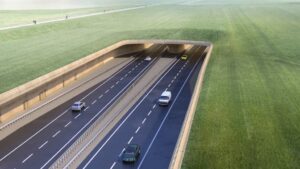 I’ve followed the campaign to overturn the decision to drive a tunnel and dual carriageway through the World Heritage Site at Stonehenge for the past few years. This year and last I’ve taken a more active role, handing out leaflets outside the British Museum, and helping with Stonehenge Alliance’s online media campaign.
I’ve followed the campaign to overturn the decision to drive a tunnel and dual carriageway through the World Heritage Site at Stonehenge for the past few years. This year and last I’ve taken a more active role, handing out leaflets outside the British Museum, and helping with Stonehenge Alliance’s online media campaign.
Unlike more direct action protest groups, such as Just Stop Oil and Extinction Rebellion, Stonehenge Alliance has limited its campaign to words, to opinion influencing, profile building and fund raising.
From time to time I tell friends and people I meet what I’m doing. Generally they are supportive. A few may have contributed to the fund to finance the forthcoming court action. But that’s as far as it goes. Very few people take an active part in campaigns or political action. We have the notorious example of a prime minister put in place by just 80,000 people, the members of the Conservative Party. And the tiny turnout among National Trust members, around 5 million of them, in the AGM vote on motions in 2022. Just 50,000 took the trouble to vote on Stonehenge Alliance’s motion to overturn the Trust’s policy to support the Stonehenge Tunnel.
So why am I involved?
I feel strongly that this scheme should not go ahead. But why? Normally, when I justify an action, or perhaps make an excuse for an inaction, I feel one good reason is enough. Two or more reasons suggest to me that the first isn’t quite strong enough on its own, that my argument might unravel unless I continue to pile on additional reasons, until the person I’m speaking to eventually, or reluctantly, sees my point of view.
But, unusually, in the case of the Stonehenge Tunnel, I can point to four equally good reasons to oppose it. Others might care to rearrange the order, but this is how I advance them.
First, Stonehenge and nearby Avebury is one, joint, World Heritage Site, designated by UNESCO. The tunnel’s portals are well within the WHS. So would be the dual carriageway leading from the portals, from both directions. A landscape whose historical and cultural importance has the highest of all citations, would be heavily mauled and gouged. When a pristine landscape such this has been so despoiled, it could never be fully reinstated if future generations wanted to remove the road and tunnel.
And the precedent. If we can do this to one WHS, why stop there? Permanent ice-cream parlours in front of Westminster Abbey? Why not? The demand is there.

Stonehenge, at dusk, from A303, Feb 2014
Second point: we should no longer even be building major roads. We are in a climate emergency. The Climate Change Committee said this year that new roads should be built only in exceptional circumstances. The Welsh government, which has road building powers, scrapped its road building programme this year and is pursuing alternative transport strategies. The same alternatives, such as developing public transport, would be available here. And new roads attract additional traffic, under the induced demand concept. A road built today will have Co2 emitting vehicles running on it well into the 2040s.
Third. £2.5bn is an awful lot of money to deliver a faster journey measured only in minutes – and much more upgrading work will be needed on the A303 to deliver significant time savings. Can we justify this expense when public finances are under such strain. We can all think of better ways to spend that sort of money. Even if the money is only spent on roads, wouldn’t it be better directed to filling potholes.
Four. The selfishness of thinking we have to take action in the here and now. The National Trust argues that the tunnel would ‘solve’ the problem of the intrusive A303 once and for all, restoring Stonehenge to its original tranquillity. But the road has been there only for 100 years or so, set against the 4000 years of the stones themselves. And, barring a cataclysm, Stonehenge should last for millennia to come. A tiny passage of time. What right has our car-obsessed generation to impose an intractable problem, that of restoring this prehistoric site of international significance to its former state, should people wish to do so, say 100 years from now, when transport might have taken a form unimaginable to us today?
In Wales they have legislation to support such a future view. It’s called the Future Generations Act, and it requires public bodies to consider the impact of their decisions and actions on people in the future.
I think any one of the points I make here should be sufficient to take this project down. But together I believe they are irrefutable. And it is clear that the arguments against building have strengthened since 2014 when, of all people, the then Libdem leader Nick Clegg first announced that the tunnel would go ahead.
There was an element of electioneering then, as there was again when the Transport Secretary approved the scheme once again in July this year shortly before a local by election, after it had been successfully blocked in the courts two years ago.
What arguments do the supporters advance? Everything from benefitting the economy of the SW by cutting congestion at Stonehenge and speeding traffic up, to removing the road from sight of the stones. (This, incidentally, could be a fifth argument in favour of inaction, the thrill so many people derive from seeing the stones from the road, and seeing them for longer in slow moving traffic.) Local people complain of rat running through their villages. They are conventional arguments which could be advanced in favour of a relief road in many communities.
But the fundamental truth is that we have to reduce traffic, not increase it – under the concept of ‘induced demand’ shiny new roads attract additional traffic, which, as things stand, will include a significant proportion of internal combustion vehicles for years to come. Less than 100 miles from Stonehenge, at a key point on the UK motorway network, Newport in South Wales, they recognised that urgency and scrapped a bypass that would have cost £1.7bn.
